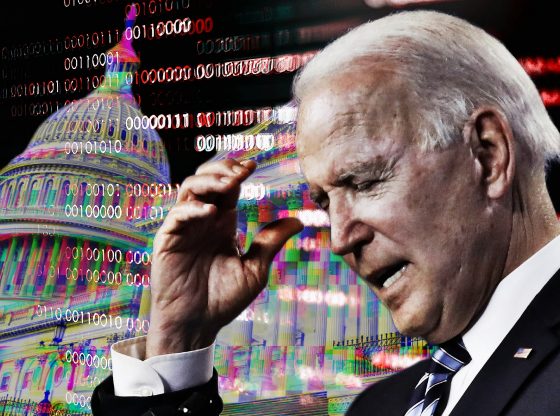As part of its renewed missile testing under the Biden presidency, North Korea test-fired its largest intercontinental ballistic missile (ICBM) to date for the first time on Thursday. This ‘monster missile’ can potentially drop several nuclear warheads on any city or target in the United States.
This was the first full ICBM test by nuclear-armed North Korea since 2017.
North Korea’s leader, Kim Jong Un, said it was designed to demonstrate the might of its nuclear force and deter any U.S. military moves.
North Korea’s return to major weapons tests poses a direct challenge to President Biden as he responds to Russia’s invasion of Ukraine.
Flight data indicated the missile flew higher and longer than any of North Korea’s previous ICBM tests.
Also, unlike North Korea’s previous ballistic missile tests, images from North Korea’s official Korean Central News Agency (KCNA) show that the newly designated Hwasong-17 is launched directly from a massive 11-axle Transporter Erector Launcher (TEL) vehicle.
The Hwasong-17 ‘monster missile’ is the largest road-mobile, liquid-fueled ICBM in the world.
As reported by ADN, the missile was previously dubbed the Hwasong-16 when it first debuted at a rare early dawn military parade on October 2020. North Korea then test-fired what is now known as a Hwasong-17 first stage to an altitude of around 620km (385 miles) from Sunan, near Pyongyang, on February 27, 2022.
According to TRT World, KCNA reported that on Thursday’s test the Hwasong-17 flew 1,090km (681 miles) at a maximum altitude of 6,248.5km (3,905 miles) with the missile hitting a target in the Sea of Japan.
TRT World added that: “The missile landed in Japanese waters, prompting anger from Tokyo, but KCNA said the launch had been carried out ‘in a vertical launch mode in consideration of the security of neighbouring countries.’”

Experts estimate the diameter of the Hwasong-17 first stage at between 2.4 and 2.5 meters (7.9-8.2 feet) and believe it can accommodate four Soviet-era RD-250-variant engines. These variants have been dubbed the “March 18 revolution” by North Korea’s leader Kim Jong-un.
Some in the U.S. intelligence community assess that North Korea likely can manufacture a liquid propulsion engine like the “March 18 revolution” indigenously.
According to ‘38 North,’ a U.S.-based project that monitors North Korea, the missile’s total mass, when fully fueled, is likely somewhere between 80,000 and 110,000 kg (88-121 tons), reported Reuters.
Most significant though, is the massive weapon’s potential to carry multiple warheads. Reuters added that:
The Hwasong-17’s size has prompted analysts to speculate that it will be designed to carry multiple warheads and decoys to better penetrate missile defences.
Some observers said that the satellite technology that North Korea claimed to have tested in the Feb. 27 and March 5 launches could also be used for a multiple independently targetable reentry vehicle (MIRV) system, potentially allowing a single missile to drop nuclear warheads on different targets.
Adding MIRVs to the mix adds another complicating factor for U.S. defense planners who need to prepare for this growing North Korean threat.
The opinions expressed by columnists are their own and do not necessarily represent the views of AmericanActionNews.com















Biden just ignores this thug.. He and the thugs who run Iran collaborate together about destroying the White Devils aka USA. Trump dealt with him and let him and let him know the USA would send him a bomb from the people of the USA.
HY
HELLO
Where did RNK get their first nuclear reactor? Oh that’s right…from the Clinton Administration. And now the Biden Administration wants an agreement with Iran which will permit its acquisition of nuclear arms. Aren’t Democrats generous?
VOTE NOT DEMOCRAT. EVER.
ssdfsd
Saber rattling…. Nice improvement though, thanks to American ingenuity…